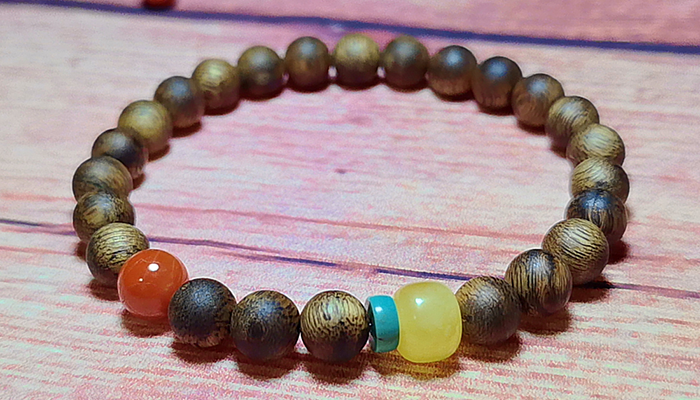Throughout history, certain natural treasures have captured human fascination for their beauty, rarity, and spiritual significance. Among these are agarwood, amber, and turquoise, three remarkable materials that have been treasured across cultures and centuries. Each carries a unique story, distinctive qualities, and deep symbolic meanings that continue to inspire and captivate people around the world. This article explores these three precious substances, delving into their origins, characteristics, cultural significance, and modern-day uses.
Agarwood, often called “the wood of the gods,” is a rare and highly valuable resinous wood formed when specific species of Aquilaria trees become infected with a particular mold. This infection triggers the tree to produce a dark, fragrant resin as a defense mechanism, transforming ordinary wood into an aromatic treasure. The resulting agarwood has a rich, complex scent that has been prized for thousands of years in perfumery, religious ceremonies, and traditional medicine.
Found mainly in Southeast Asia, including countries like Vietnam, Cambodia, and Indonesia, agarwood has been historically treasured for its rarity and exquisite fragrance. Its scent is often described as deep, woody, sweet, and slightly balsamic, with nuances that change as the incense burns or the oil evaporates. The scent is soothing and grounding, believed to promote relaxation and spiritual awareness.
Agarwood has a long tradition in spiritual and cultural practices. In many Asian cultures, burning agarwood incense is a sacred act used to purify spaces, invite blessings, and deepen meditation. It is associated with inner peace, clarity, and connection to higher realms. The wood’s rarity and unique formation process make it a symbol of resilience and transformation.
Moving from the forest to the earth, amber is another natural treasure that has fascinated humans for millennia. Unlike agarwood, amber is fossilized tree resin, sometimes dating back millions of years. This organic gemstone forms when resin from ancient trees hardened and was preserved through time, often capturing insects and plant material inside. Amber’s warm golden to reddish hues evoke sunlight and vitality, making it a symbol of life and protection.
Amber has been used in jewelry, amulets, and healing practices since prehistoric times. Archaeological discoveries have revealed amber beads and artifacts from ancient civilizations, highlighting its importance across cultures. Beyond its beauty, amber was believed to have protective powers, warding off evil and bringing good luck. Some cultures used amber as a talisman for health and vitality.
In modern times, amber remains popular in decorative arts and alternative healing. It is thought to have soothing and cleansing properties, often used to ease pain and inflammation. Amber’s warm energy is said to uplift mood and encourage positivity. Wearing amber jewelry or keeping amber pieces close is believed to create a sense of comfort and groundedness.
Completing this trio of natural treasures is turquoise, a gemstone with a vibrant blue to green color that has been cherished by indigenous peoples of the Americas, the Middle East, and Asia for thousands of years. Turquoise is a hydrated phosphate of copper and aluminum, prized for its unique hue and spiritual significance. Its striking color has made it a symbol of protection, wisdom, and good fortune.
Turquoise has been extensively used in jewelry, ceremonial objects, and art. Native American tribes, particularly in the Southwest United States, have a long tradition of crafting intricate turquoise jewelry and using the stone in rituals. It is considered a sacred stone that connects the wearer to the sky and earth. In Persian culture, turquoise was believed to protect against evil and bring prosperity.
Beyond its cultural importance, turquoise is also valued for its metaphysical properties. It is thought to promote communication, emotional balance, and spiritual growth. The stone is often used to calm the mind, reduce stress, and enhance intuition. Wearing turquoise or placing it in one’s environment is said to attract positive energy and foster harmony.
The allure of agarwood, amber, and turquoise lies not only in their physical beauty but also in their deep connections to nature and spirit. Each represents a different element: wood, fossilized resin, and mineral, and carries energies that support healing, protection, and spiritual insight. These treasures remind us of the earth’s ability to create wonders that transcend time.
In today’s world, these three treasures continue to inspire artisans, healers, and collectors. Agarwood oils and incense are used in luxury perfumery and meditation practices. Amber jewelry remains a timeless accessory, blending ancient charm with modern style. Turquoise adorns countless pieces of fine jewelry and spiritual tools, symbolizing a bridge between the physical and the spiritual.
Sourcing these treasures responsibly is increasingly important. Agarwood’s rarity has led to overharvesting and concerns about sustainability. Efforts to cultivate agarwood trees and regulate harvesting aim to protect this precious resource. Similarly, ethical sourcing of amber and turquoise ensures that mining practices respect the environment and local communities.
Incorporating agarwood, amber, and turquoise into your life offers not just aesthetic pleasure but also a connection to ancient traditions and natural energies. Whether through wearing jewelry, using aromatic oils, or creating sacred spaces, these treasures provide a link to the earth’s deep wisdom and beauty.
In conclusion, agarwood, amber, and turquoise stand as timeless symbols of nature’s artistry and spiritual power. Their rich histories and unique qualities continue to captivate and inspire. Embracing these three treasures invites a deeper appreciation for the natural world and a greater sense of connection to our own inner journey.

